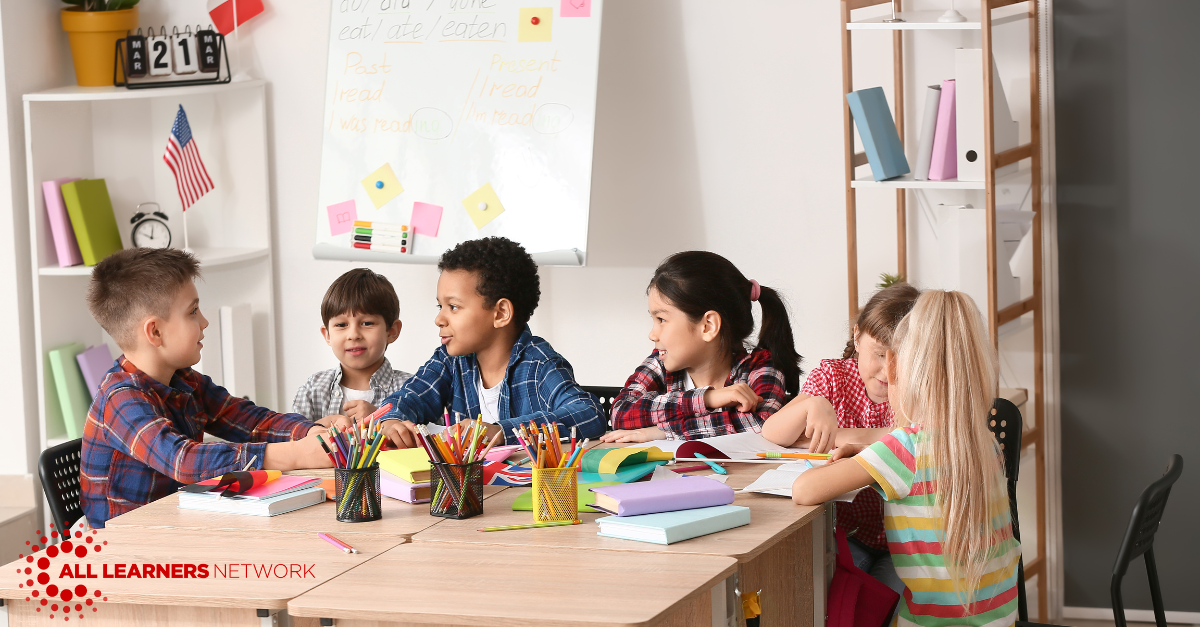
Exploring 4 Categories of Number Sense Routines
The first five to fifteen minutes of a math block set the tone for discourse and engagement during math class. At All Learners Network (ALN)), we refer to this time as Launch. This crucial time helps to position all students as mathematicians, as they lean into number sense routines and conversations. The All Learners Lesson Structure utilizes Launch as a powerful start to its balanced math block.
Let’s take a look at some of the types of routines we might use during Launch. This is not an exhaustive list as many educators have created unique routines and resources to support number sense. No matter the routine, we recommend selecting the prompt based on your mathematical goals for your students that particular day.
We often organize our number sense routines in four overarching categories:
- Visual Images
- Estimation
- Reasoning
- Number Strings
VISUAL IMAGES
Visual images are the muscle-building routines that construct stronger cognitive skills for developing brains. Research suggests that there are parts of our brain that actually visualize finger patterns when we do calculations. Providing images for students to think about when they are doing complex math can help them better hold the math in their heads. Visual images and models are essential in helping students to build their conceptual understanding of important math concepts. Images also help create context, beauty, and enjoyment in the math that students are doing.
Visual images are extremely flexible in terms of how you facilitate the Launch conversation. Here are two of our favorite prompts:
Notice/Wonder
This simple yet powerful routine starts with simply asking the questions: “What do you notice? What do you wonder?” There are no right or wrong answers - just space for students to observe and ask questions. This prompt is great to use with visual images but is applicable across so many settings. It can be a great way to start a discussion in a way that is inclusive of all learners and all ideas.
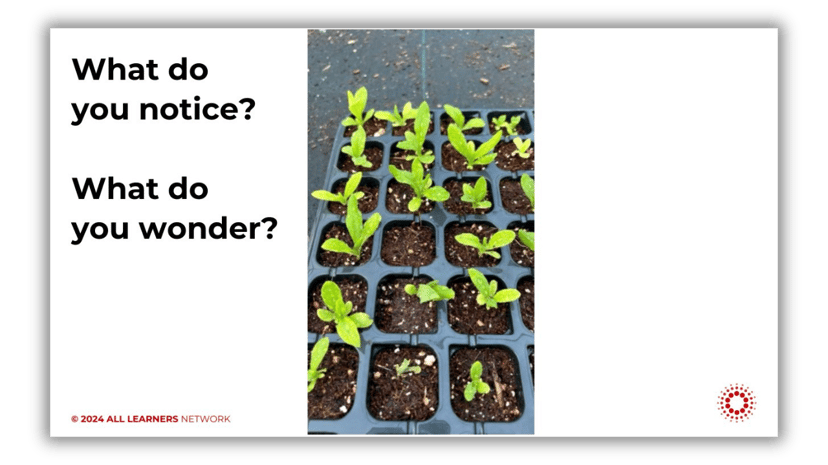
How Many? How Do You Know?
When using a visual image that particularly lends itself toward a quantity, this can be a helpful prompt to elicit different counting or additive strategies. It is inclusive of many different strategies such as counting by ones, subitizing, combining groups, skip counting, and more. The question “How do you know?” is the critical piece in asking students to consider different ways to get to a total number of objects.
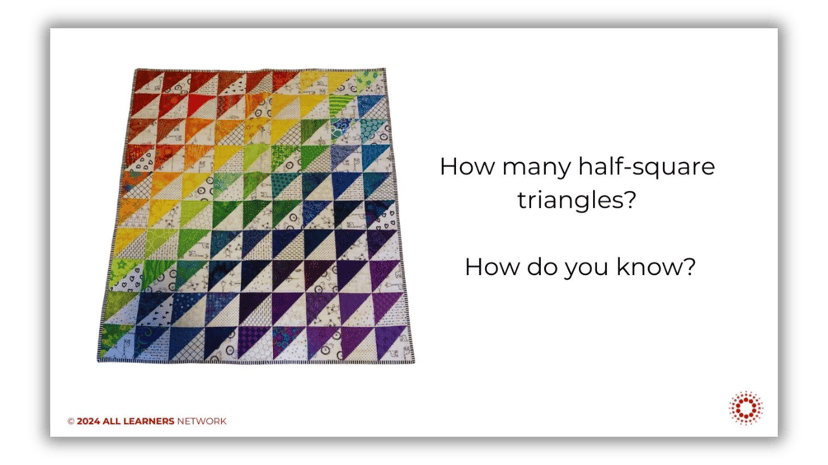
ESTIMATION
Estimation tasks can take several different forms. Some helpful prompts when asking students to estimate include asking them to think about a number/quantity that is “way too high” or “way too low” and using those as bookends to help students come to a reasonable estimate. We want to help students use number sense and reasoning to estimate, rather than making wild guesses. During this process, it is important to validate all student estimates and use questioning to help them build more reasonable and confident estimates.
Many estimating tasks use an image or video as a prompt, though you could certainly pose a written or verbal problem or use real-life objects. Sometimes we don’t actually reveal the total number of objects to students, keeping the focus instead on the actual reasoning involved in estimating. Sometimes we reveal additional information that helps students narrow in on a more reasonable estimate or the exact total.
How do estimation tasks differ from the “how many” routines above? The "how many?" routines allow multiple entry points- noticing quantities of various characteristics within an image and how you might name the quantity (additively or multiplicative, etc.). Estimation usually requires some prior experience with specific benchmark quantities, like 5, 10, or 20. Students think of a referent set of the benchmark numbers to estimate the total (e.g. I know this amount (pointing to an area of objects) is about 10, and I see about 6 of those total areas, so there are about 60 altogether.).
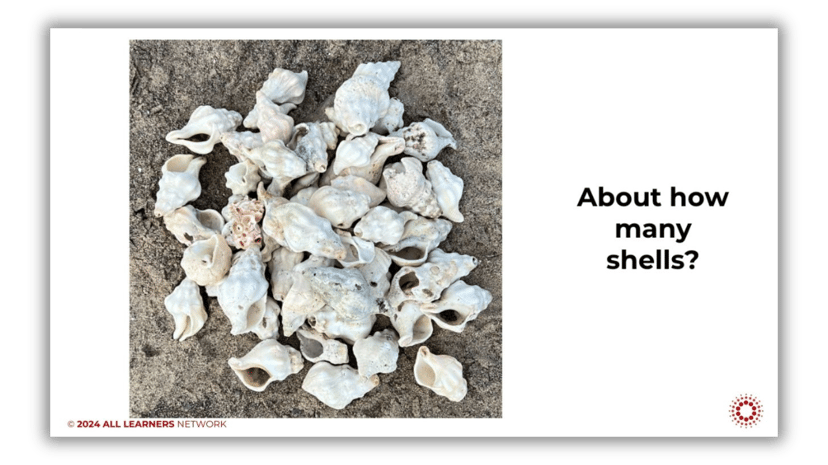
REASONING
Reasoning tasks typically have multiple answers. The focus is on allowing students to provide appropriate reasoning for their thinking - convincing others of their ideas or thoughts. Like most things, reasoning must be developed through multiple exposures over time. There are so many different ways to approach reasoning tasks.
Here are a few of our favorites:
Which One Doesn’t Belong?
In this routine, students typically look at four objects (or groups, numbers, shapes, etc.) and justify which one is the outlier. There is no right or wrong answer - there can be valid reasons to choose any of the four as the one that “doesn’t belong.” The emphasis should be on students justifying their reasoning as to why the other three share a common attribute that the fourth one does not.
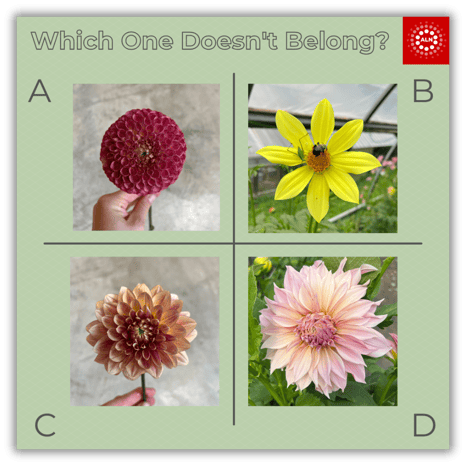
Would You Rather…
This is another reasoning routine that presents two related options. Students use math, logic, and reasoning to justify their choice of which option they would prefer. Again - not about finding a correct answer, but rather focusing the discussion on justification and discussion about each option.
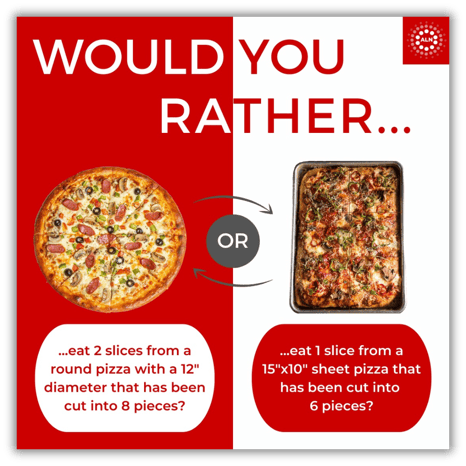
Same but Different
This routine helps students move away from black-and-white thinking and build flexibility. Students consider two images, statements, or numerical expressions, and discuss the ways they are the same, and also the ways they are different.
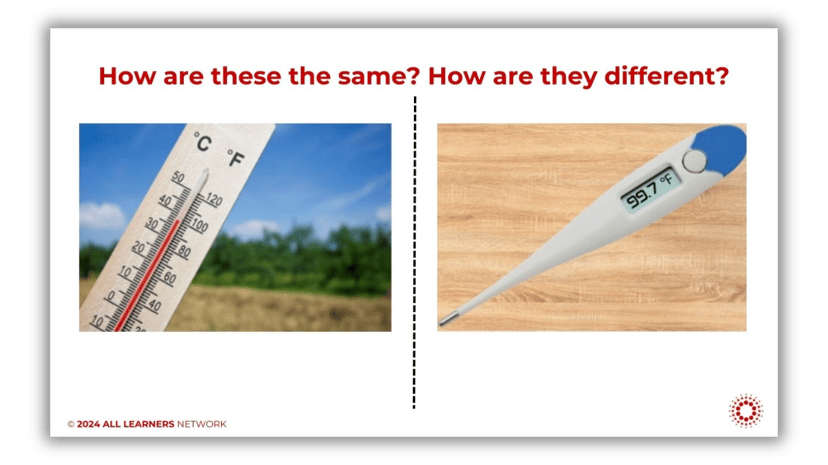
NUMBER STRINGS
Number Strings (or problem strings or number talks, all similar concepts), help students discover patterns and relationships and engage with the properties of operations.
In this routine, the teacher presents a problem or series of related problems for students to solve mentally. These are often equations, but could also be visual images or models such as ten frames or dot cards. Students take some time to think about the problem and hold up a thumb when they are ready to share. It can be helpful to give students a chance to turn and talk about their strategy with a peer before beginning to call on students to share strategies aloud. As students share, record their thinking on the board (even if their answer is incorrect or they make a mistake!). All thinking and strategies need to be validated. If students get different answers, you can use this as an opportunity to have students double-check or try solving another way. You can also help students make connections by asking how various strategies are similar or different, or by recording a strategy using multiple models.
Launch is such a necessary and extraordinary part of the math block. While this list is not an exhaustive list of number sense routines, we hope it gives you some ideas of inclusive ways you can start your math block.
Click here for the printable version.
What Now?
- Read more about Launch (pages 16 - 21) of our free book, Teaching Math for All Learners and explore some of our free Launch resources here.
- Check out our Getting Started with Launch Guide and our free Launch Planning Template.
- Bring All Learners Network (ALN) into your school or district for embedded professional development.

All Learners Network is committed to a new type of math instruction. We focus on supporting pedagogy so that all students can access quality math instruction. We do this through our online platform, free resources, events, and embedded professional development. Learn more about how we work with schools and districts here.



.png?width=352&name=ALN%20Hero%20Images%20(16).png)

